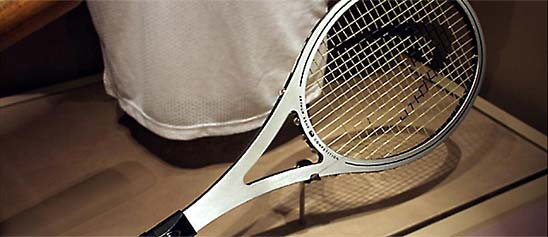St. Raphael, Angel of Science , Healing and Love, blue ribbon given to Ann Hammerbacher (Buell) as a camp counselor at Camp Shriver. St. Raphael is the patron saint of mental illness and is associated with the Joseph P. Kennedy Jr. Foundation. The Joseph P. Kennedy Jr.
- Description (Brief)
-
St. Raphael, Angel of Science , Healing and Love, blue ribbon given to Ann Hammerbacher (Buell) as a camp counselor at Camp Shriver. St. Raphael is the patron saint of mental illness and is associated with the Joseph P. Kennedy Jr. Foundation. The Joseph P. Kennedy Jr. Foundation is a non profit organization founded in 1946 by Ambassador Joseph P. Kennedy Sr. in memory of his son Joseph P. Kennedy Jr. The mission of the Kennedy Foundation is "to provide leadership in the field of mental retardation and service to persons with mental retardation, both those born and unborn, and their families."
-
Camp Shriver began in Eunice Shriver’s backyard at her Timberlawn estate in 1962. Shriver, the sister of President John F. Kennedy and Rose, an intellectually disabled sister, decided to hold a day camp for intellectually disabled kids from DC and Maryland. The high school age counselors were taught how to teach the campers different skills through play and introduced them to horseback riding, swimming, canoeing and group games, many of the campers experiencing these activities for the first time. Camp Shriver continued each summer until 1968 when the first Special Olympics Games were held in Chicago which has grown into the largest organization for intellectually disabled athletes in the world. Ann Hammerbacher (Buell) applied to be a volunteer at the camp through her parochial high school and worked there from 1962-1967.
-
From its beginnings as Camp Shriver in Eunice Kennedy Shriver’s backyard, to the first international games in 1968, Special Olympics has been about giving people with intellectual disabilities the opportunity to participate in sport. This participation builds confidence, provides emotional support and offers social opportunities for the athletes and their families. With state chapters and a global presence through its World Games, “Special Olympics is the largest sports organization for people with intellectual disabilities with 5 million athletes in 170 countries worldwide.”
- user
-
Buell, Ann
- ID Number
-
2017.0242.03
- accession number
-
2017.0242
- catalog number
-
2017.0242.03
